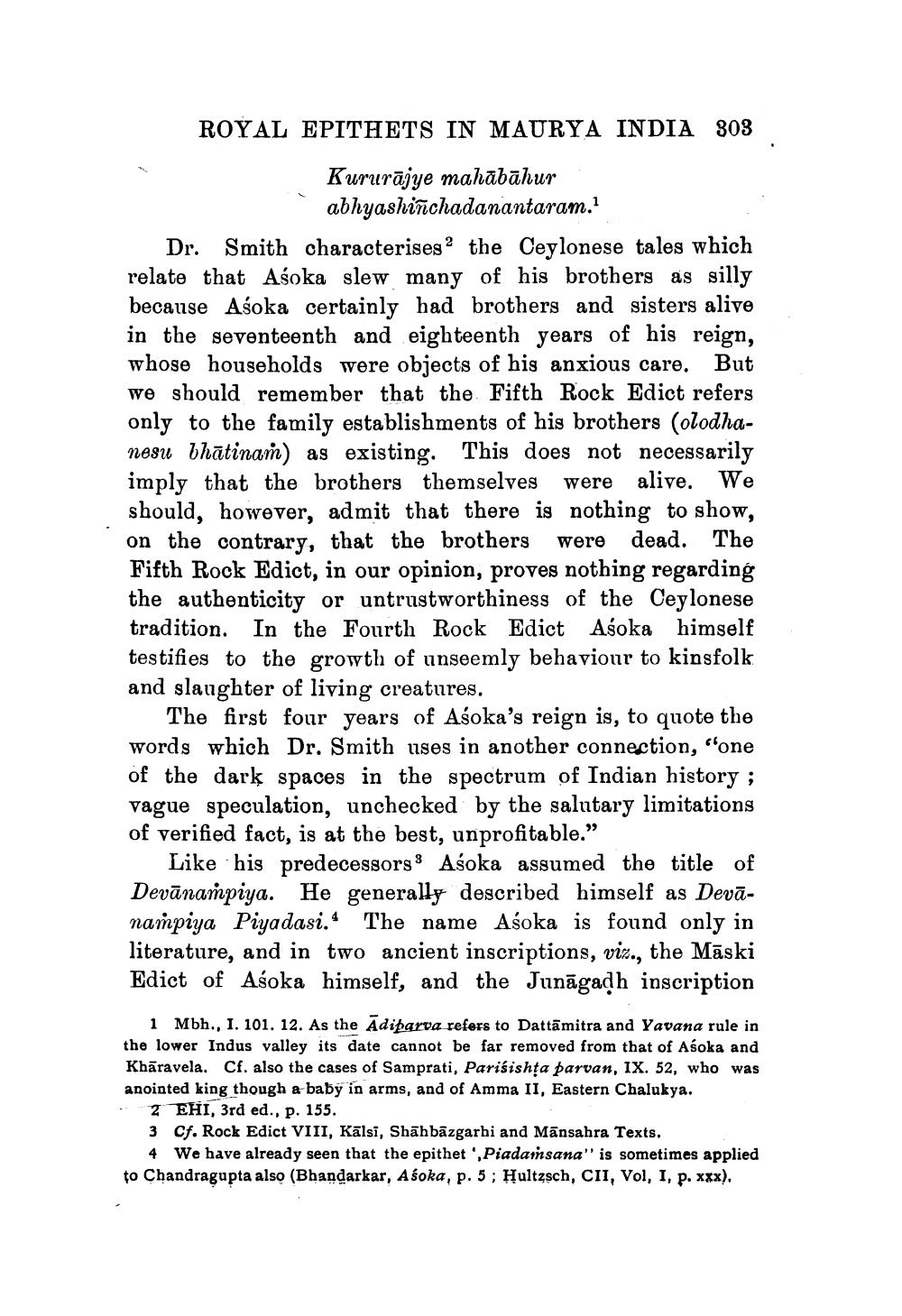________________
ROYAL EPITHETS IN MAURYA INDIA 303
Kururājye mahābāhur
abhyashinchadanantaram. Dr. Smith characterises? the Ceylonese tales which relate that Asoka slew many of his brothers as silly because Aśoka certainly had brothers and sisters alive in the seventeenth and eighteenth years of his reign, whose households were objects of his anxious care. But we should remember that the Fifth Rock Edict refers only to the family establishments of his brothers (olodhanesu bhātinam) as existing. This does not necessarily imply that the brothers themselves were alive. We should, however, admit that there is nothing to show, on the contrary, that the brothers were dead. The Fifth Rock Edict, in our opinion, proves nothing regarding the authenticity or untrustworthiness of the Ceylonese tradition. In the Fourth Rock Edict Asoka himself testifies to the growth of unseemly behaviour to kinsfolk and slaughter of living creatures.
The first four years of Asoka's reign is, to quote the words which Dr. Smith uses in another connection, "one of the dark spaces in the spectrum of Indian history ; vague speculation, unchecked by the salutary limitations of verified fact, is at the best, unprofitable."
Like his predecessors: Asoka assumed the title of Devānampiya He generally described himself as Devānampiya Piyadasi. The name Asoka is found only in literature, and in two ancient inscriptions, viz., the Māski Edict of Asoka himself, and the Junāgadh inscription
1 Mbh., I. 101. 12. As the Adiparva refers to Dattāmitra and Yavana rule in the lower Indus valley its date cannot be far removed from that of Asoka and Khāravela. Cf. also the cases of Samprati, Parisishța parvan, IX. 52, who was anointed king though a baby in arms, and of Amma II, Eastern Chalukya.
2 EHI, 3rd ed., p. 155. 3 Cf. Rock Edict VIII, Kālsi, Shāhbāzgarhi and Mānsahra Texts.
4 We have already seen that the epithet,Piadamsana" is sometimes applied to Chandragupta also (Bhandarkar, Asoka, p. 5; Hultzsch, CII, Vol. I, p. xxx),




